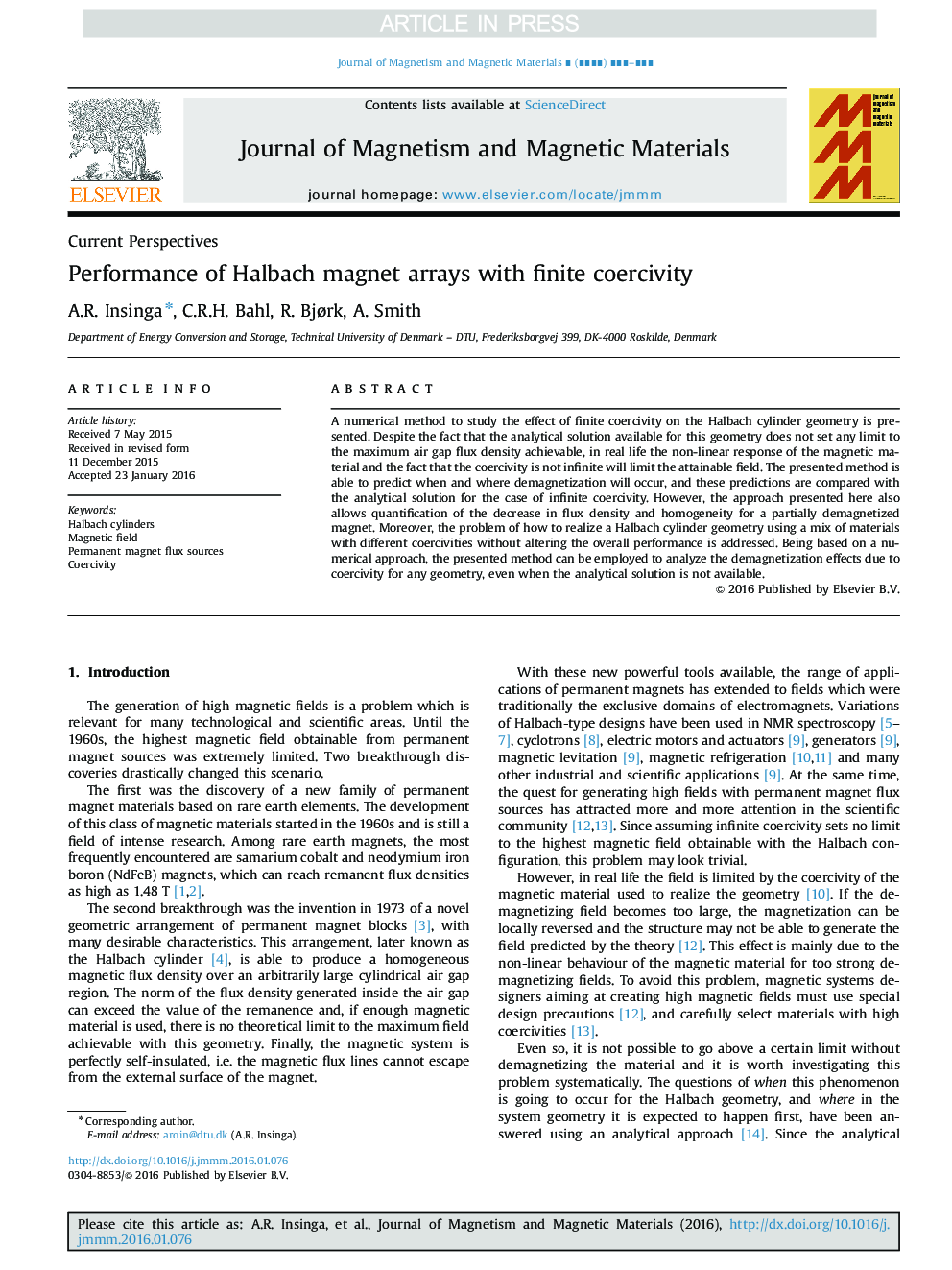| Article ID | Journal | Published Year | Pages | File Type |
|---|---|---|---|---|
| 8155281 | Journal of Magnetism and Magnetic Materials | 2016 | 8 Pages |
Abstract
A numerical method to study the effect of finite coercivity on the Halbach cylinder geometry is presented. Despite the fact that the analytical solution available for this geometry does not set any limit to the maximum air gap flux density achievable, in real life the non-linear response of the magnetic material and the fact that the coercivity is not infinite will limit the attainable field. The presented method is able to predict when and where demagnetization will occur, and these predictions are compared with the analytical solution for the case of infinite coercivity. However, the approach presented here also allows quantification of the decrease in flux density and homogeneity for a partially demagnetized magnet. Moreover, the problem of how to realize a Halbach cylinder geometry using a mix of materials with different coercivities without altering the overall performance is addressed. Being based on a numerical approach, the presented method can be employed to analyze the demagnetization effects due to coercivity for any geometry, even when the analytical solution is not available.
Related Topics
Physical Sciences and Engineering
Physics and Astronomy
Condensed Matter Physics
Authors
A.R. Insinga, C.R.H. Bahl, R. Bjørk, A. Smith,
